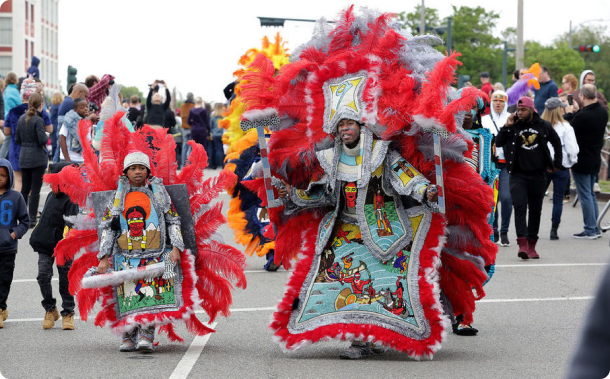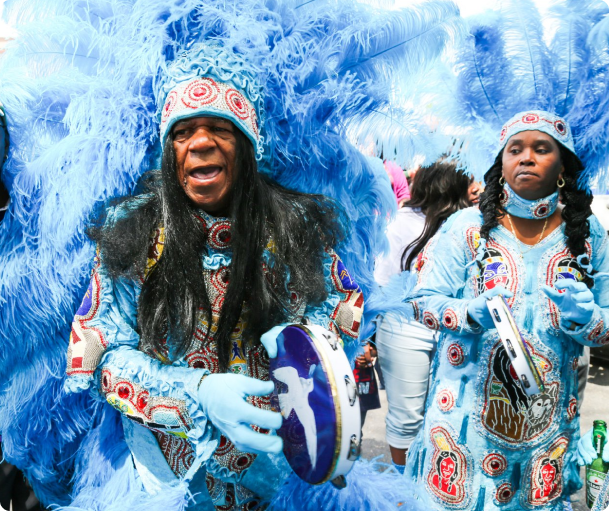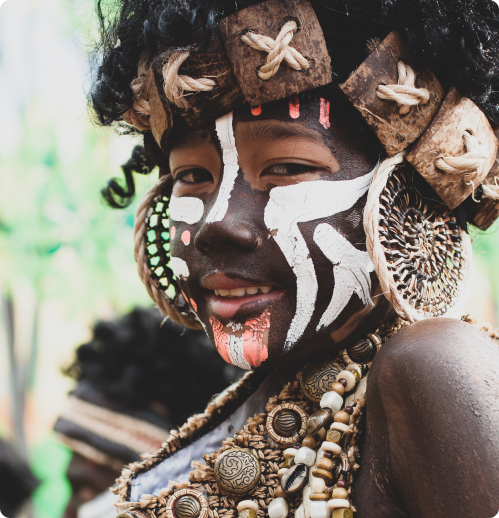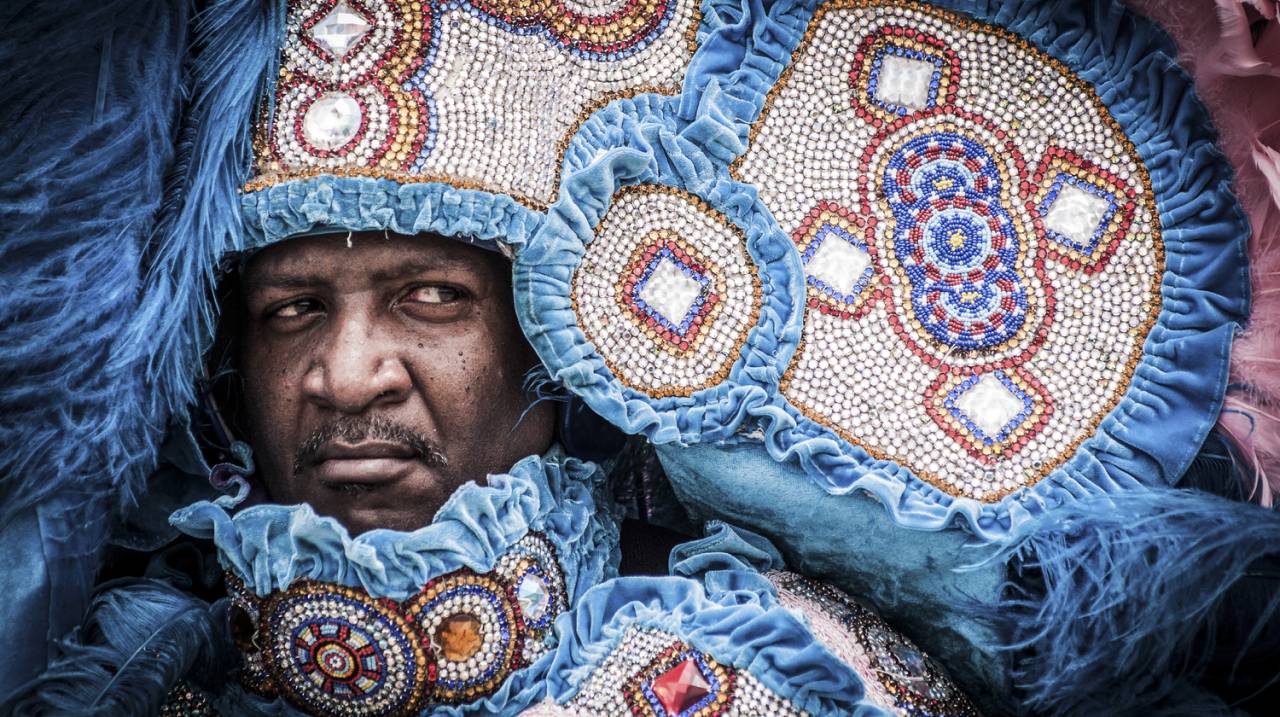Where it all began
The origins of Mardi Gras can be traced to medieval Europe, passing through Rome and Venice in the 17th and 18th centuries to the French House of the Bourbons.
From here, the traditional revelry of «Boeuf Gras» or fatted calf, followed France to her colonies.

In 1710, the «Boeuf Gras Society» was formed and paraded from 1711 through 1861.
The procession was held with a huge bull's head pushed along on wheels by 16 men.Later, Rex would parade with an actual bull, draped in white and signaling the coming Lenten meat fast.

That year, the Perseverance Benevolent & Mutual Aid Association was the first of hundreds of clubs and carnival organizations formed in New Orleans.
The Mardi Gras Tradition
The festival season varies from city to city, as some traditions, such as the one in New Orleans, Louisiana, consider Mardi Gras to stretch the entire period from Twelfth Night (the last night of Christmas which begins Epiphany) to Ash Wednesday.
Others treat the final three-day period before Ash Wednesday as the Mardi Gras.

Mardi Gras arrived in North America as a French Catholic tradition with the Le Moyne brothers, Pierre Le Moyne d'Iberville and Jean-Baptiste Le Moyne de Bienville, in the late 17th century, when King Louis XIV sent the pair to defend France's claim on the territory of Louisiane, which included what are now the U.S. states of Alabama, Mississippi, Louisiana and part of eastern Texas.

The tradition in New Orleans expanded to the point that it became synonymous with the city in popular perception, and embraced by residents of New Orleans beyond those of French or Catholic heritage.

The Knights of Momus, led by some prominent Galvestonians, decorated horse-drawn wagons for a torch lit night parade. Boasting such themes as «The Crusades» «Peter the Great» and «Ancient France» the procession through downtown Galveston culminated at Turner Hall with a presentation of tableaux and a grand gala.

